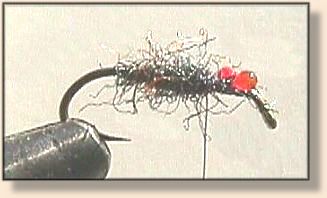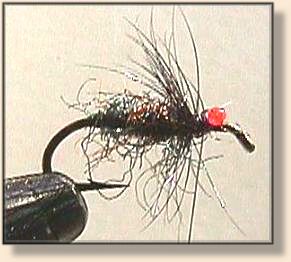
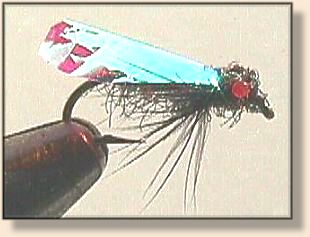 |
|
Monarchos - Horse Fly
|
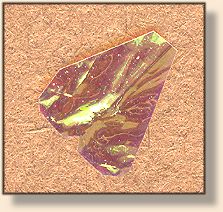
5. Prepare the mylar wings by cutting a valentine heart from a piece
of pearl-coloured sheet mylar. (You can use organza from the craft
store, Flashback, Mirage Crinkle shown here, or other sheetings.
The principle is to let some iridescence shine through.) The
easiest way to do this is just like you used to make one for mom or teacher:
fold a piece in half, and cut half a heart. Flatten the top and bottom
a bit.
6. Tie the wing on caddis-style. It should reach slightly past
the hook bend and lie low on the hook shank.
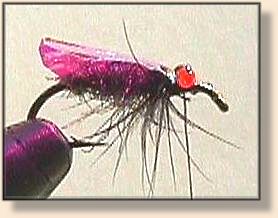 7. Dub lightly around the eyes to create a head. 8. Whip-finish and cement.

More: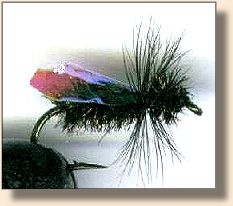
Editors note from JC:
|
|
For more great flies, check out:
Beginning Fly Tying,
Intermediate Fly Tying and Advanced
Fly Tying.
|
